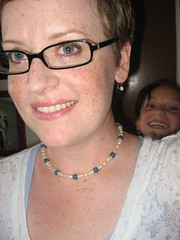Today a bunch of us gathered in the ACT Lab with Andrew Feenberg for an interview with the Faculty of Applied Science’s FAS Thinking, a newsletter used to promote the various research activities and projects of the different schools within the faculty. It is an interesting task to try to explain philosophy of technology, critical theory of technology and technology studies, as well as their divergences, in under 25 words (the obvious critique of journalism would go here if one had the time or interest). Anyhow, it was, well fun is not the right word, but once we all got going, it was interesting. I mean, academics typically like talking about their work, and since we all start from the same theoretical foundation or reference point (that is, Feenberg’s critical theory of technology) we can communicate, and understand, basically, what each other is saying. The interviewers, on the other hand, have no such reference point, and further, are unfamiliar with the jargon (some obvious toughies were rationalization – democratic or otherwise, hermeneutics, phenomenology and the like). There were a lot of gaps in their notetaking, when talk turned technical, and who could blame them. We’ve been at this stuff for years, they’re attempting a crash course, with no similar motivation. We’ll see how the article turns out. I’ll link to it when it’s published.
What exactly do you do?
August 23rd, 2006Here it is
August 21st, 2006This blog is the bare skeleton of my doctoral research project. It is an experiment in all respects. Primarily, it is an exercise in open scholarship as well as a test of my faith in the new global justice activism and the democratic potential of the Internet.
Is it possible to do serious, sincere work in an open environment, an unregulated (sort of) space like the Internet? A project like the one I envision can only be built upon the values espoused by the new global justice activism: mutal aid, trust, volunteerism, creativity, participatory knowledge. My Friend says I am being naiive. And I am naiive, until I’m doubled over and retching from betrayal, disappointment and longing. Still, after 35 years, I’m naiive. Or perhaps just stubborn (which is not, often, unrelated to stupidity). Anyhow, there it is.
And here I am, finally, in cyberspace – a destination and a persona. My project will be fleshed out in this space as the days and months go by. I need to finish my damn comps first, but then I’ll begin “collecting data” in earnest. More on the tradition of the academy to come. No doubt.
Who am I? Activists in the global justice movement are a suspicious, cagey bunch. I first learned that covering the OAS protest in Windsor, Ontario in 2000. I was reporting for the community weekly I helped found – the only alternative voice in the city (except, in fairness, for CBC radio at times). The only media outlet interested in what the activists had to say. But because I had official press credentials (not my IMC pass) I was scorned and heckled by protesters. Funny, to me, they didn’t know I was one of them. So, for the record:
I am a social justice activist and doctoral student, in that order. I go to school at Simon Fraser Unversity in Vancouver, Canada, and I work under the American philosopher of technology, Andrew Feenberg. I’m interested in figuring out ways to make a better world. Right now, I’m studying how activists in the global justice movement appropriate technology to achieve their social justice goals. Tech activism has (at least) three simultaneous outcomes: it democratizes technology, it develops democratic practice and it produces an alternative vision of society. This blog is meant to be a space for documenting the history and accomplishments of tech activism. In the spirit of the free software movement, it is an experiment in open scholarship, and all tech activists are encouraged to participate through contributing to the project, as well as questioning, editing and correcting information found here.
August 3rd, 2006
I’m writing a journal article for Tailoring Biotechnologies. And their editorial comments are here.
